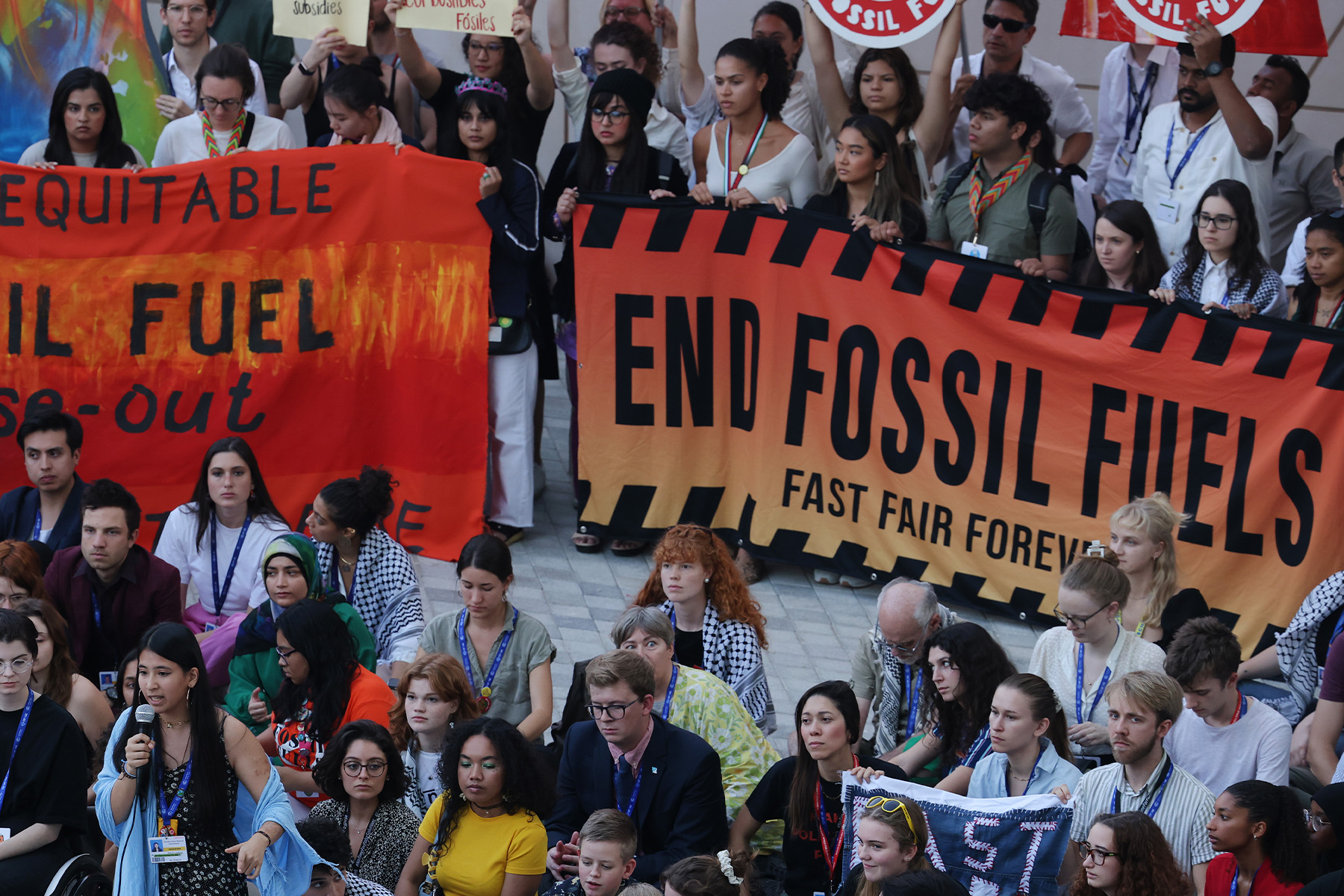This article is an on-site version of our Moral Money newsletter. Sign up here to get the newsletter sent straight to your inbox.
Visit our Moral Money hub for all the latest ESG news, opinion and analysis from around the FT
France’s TotalEnergies this week made “a clean exit” from Canadian oil sands with a $4bn sale of its assets there to Suncor, Canada’s second-largest oil company. It marks the latest divestment by European energy companies from Canada’s oil, which is often associated with higher levels of pollution than conventional production. BP also quit Canada’s oil sands industry last year. US companies have been far less willing to part ways with oil assets for environmental reasons.
This echoes the trend among US and European banks. European lenders, notably HSBC, are shifting away from fossil fuel projects. US banks have not, and continue to face fire from environmentalists for energy dealmaking at annual meetings.
There’s more on this theme below in my report about this week’s climate shareholder proposals at four of the biggest US banks.
And I also have news from the impact investing world, where it is getting harder to be best-in-class. — Patrick Temple-West
As pressure mounts to meet global net zero goals, carbon markets are in the spotlight. Approaches vary from cap-and-trade compliance schemes to voluntary carbon markets and internal carbon pricing. Meanwhile, some argue that to reduce emissions at sufficient scale and speed, carbon taxes are essential. The next FT Moral Money Forum report will explore the options and review the opportunities. And we want to hear from you. Do you favour carbon taxes? Can voluntary markets overcome quality concerns? Will compliance markets do more to push business to decarbonise? Share your thoughts here.
Shareholders at Bank of America, Citigroup, Wells Fargo and Goldman Sachs this week voted on petitions asking the banks to phase out financing of new fossil fuel projects. These proposals didn’t fare well last year — and support for them this year was even lower.
Fewer than 10 per cent of shareholders supported these resolutions, the banks said. Last year 11-12 per cent of shareholders endorsed the phaseout demands.
“Investors have once again failed to align their voting with their stated positions on climate-related financial risk,” said Jessye Waxman, a senior campaigner at the Sierra Club. Investors “must move beyond calls for disclosure only” on climate issues at banks’ annual meetings, she added.
But shareholder proposals asking banks to disclose more about their climate policies actually fared better with investors. A first-time shareholder proposal at Goldman Sachs asked the bank to provide a realistic climate transition plan for 2030, and it won support from 30 per cent of the firms’ shareholders. The vote followed with a similar proposal at Bank of America that won 28.5 per cent support. (See our colleagues’ story on these votes here).
“Although Goldman has committed to aligning key sectors of its financing portfolio with net zero targets, its plan for achieving those goals is unclear,” said Danielle Fugere, president of As You Sow, the advocacy group that filed the petitions.
“This strong vote is a call to action,” she said. “Goldman Sachs has demonstrated leadership in setting 2030 targets aligned with global climate goals. Now comes the hard work of making its plan actionable,” she said.
Environmental activists seem to be at an impasse. On the one hand, they could demand banks phase out fossil fuel projects and garner about 10 per cent support — not quite enough to rattle companies into changing behaviour. Or activists could demand disclosures and transition plans, which appear to be favoured by investors. The first approach conceivably reaps climate action more quickly — but only if more shareholders throw their weight behind it.
Amid the political attacks on ESG in the US, “asset managers — more than ever — do not wish to be perceived to be telling company management how to do their jobs,” Lindsey Stewart, Morningstar’s director of investment stewardship research, told me. “They want disclosure around climate strategy, but don’t want to set that strategy.”
The situation is quite different on the other side of the Atlantic, where, as mentioned above, institutions have shown more action on decarbonisation drives. But it’s a bit like comparing apples and oranges.
“It’s hard to conclude that shareholder action on climate is disadvantaging US banks compared with their international peers,” he said. “That pressure is manifesting in a different way on the other side of the Atlantic.”
Next month, the last two of the six major US banks will hold their annual meetings — JPMorgan on May 16 and Morgan Stanley on May 19 — and both face a similar suite of climate proposals as their peers. (Patrick Temple-West)
In the past few years, impact investing has evolved from a strategy for environmentalists into a growth opportunity for the world’s biggest banks. Speaking at the bank’s annual shareholder meeting earlier this month, then-UBS chief executive Ralph Hamers said “client interest in impact investing is rising significantly.”
But a chronic problem with impact reports is that they have been largely anecdotal. Impact reports from large financial firms tend to highlight a few investments in a school or clean energy project, but precise metrics are left out. For all the enthusiasm for impact investing, the data is sparse and only a handful of firms have been identified as leaders in the space.
Almost 200 firms have signed up for the impact investing principles set up by the World Bank’s International Finance Corporation in 2019. These fund managers — which include Apollo, BlackRock and KKR — agreed to have their impact management practices* verified by independent assessors and update information annually.
According to BlueMark, a third-party verification firm, only six out of 60 firms sit atop its impact leaderboard: Bain Capital, British International Investment, Finance in Motion, Leapfrog, Nuveen and Trill.
To earn their spots on the leaderboard, these firms must identify* how much their investments are helping society. How significant is the intended impact? On the other hand, the firms must avoid ESG risks. Ultimately, firms must have impact objectives that are consistent and can actually be achieved.
You can read the BlueMark 2022 report for British International Investment here.
“Our goal with publishing the leaderboard was to create a race to the top,” Christina Leijonhufvud, BlueMark’s chief executive, told me.
Next month, BlueMark will be updating its leaderboard as four more names made the cut, she said. “We wanted to make sure this is not a check-the-box exercise. It will get harder to make it into that top quartile” of impact firms, she said.
As impact investing grows up, some big name investors are also eyeing opportunities within the businesses that do the ratings. Last week, BlueMark announced it had raised $10mn from S&P Global, Temasek and other investors.
“We see significant growth opportunities for impact investing in Asia and around the world,” said Dawn Chan, a managing director at Temasek, the Singaporean state-owned investment fund. (Patrick Temple-West)
Big oil companies are being hit by opposing currents. They’re under pressure to pump more, while also being urged to speed up the shift to clean energy. Our editorial board lays out how supermajors can avoid getting stuck in the riptide.
*Clarification: this story has been updated to better reflect BlueMark’s scoring process.
FT Asset Management — The inside story on the movers and shakers behind a multitrillion-dollar industry. Sign up here
Energy Source — Essential energy news, analysis and insider intelligence. Sign up here
The fight over fossil fuel phaseout vs disclosure



